We started out with a cable car ride. Wellington starts at the ocean and climbs the hill. It’s a particularly steep and long hill. It’s only one hill, but people get tired of walking it. So they installed a cable car, not unlike the cable cars in San Francisco. Where the Wellington cars differ is the length of the line. While substantial, it is much less than the length of a line in SF. Eventually, they decided to modernize it. They installed a fully automatic system with a amazing cable setup, and put an operator in the car just in case. You can see one of the original cars on the left, and the new cars approaching the top of the hill on the right. You can see the new cable pulleys. They are quite impressive.
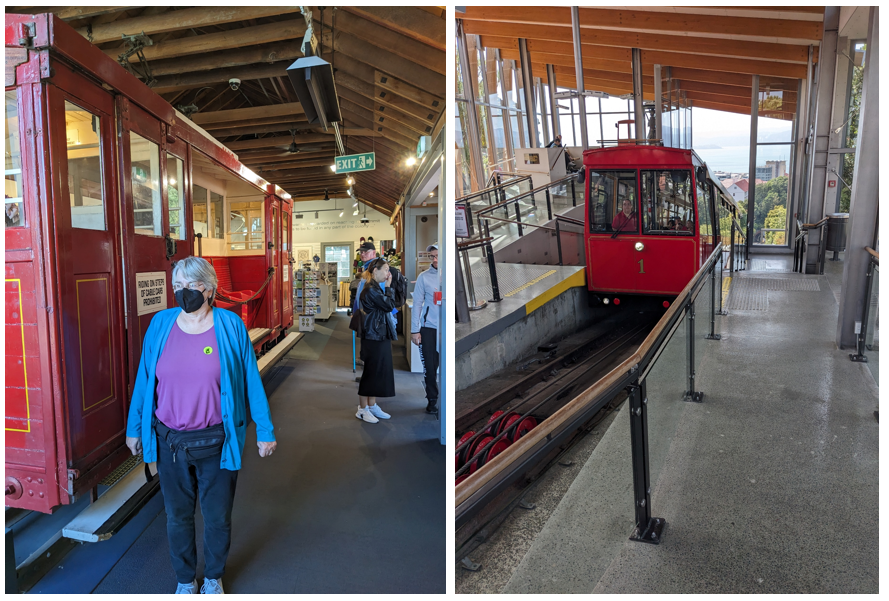
Our main activity was Te Papa, the national museum. I learned some amazing things. For example, Cook successfully mapped New Zealand. He only made one large mistake. He thought NZ was one island. He missed a rather substantial gap between the north and south islands. Since he knew nothing of the gap, people decided to name it Cook’s Strait. Who can explain these things?
The more substantial interesting subject was the aboriginal people, called the Maori. NZ has an official policy of being a dual-culture country. The main reason for this is a man (I don’t remember his name) who came from England to help improve law and order in the early days of European whaling. The Maori asked him for help. He advised them to write a declaration of independence. That transformed the many Maori tribes into one nation with the right to negotiate with the English government. They negotiated The Treaty of Waitangi. Mostly, the treaty demonstrates that the world is not yet perfect. The large yellow and clear banner hanging from the ceiling in the left hand picture is the remains of the original. Obviously, whoever was responsible for preserving the treaty did not consider it an important document. The museum also had three passages extracted in both English and Maori to illustrate why the two treaties couldn’t be the same. For example, the Mauri culture has no concept of land ownership, so the section on land could not describe it in Mauri. You can see the English version of the extractions on the right. Obviously, there is some very active “discussion” of what specific actions should be taken to fulfill the treaty.
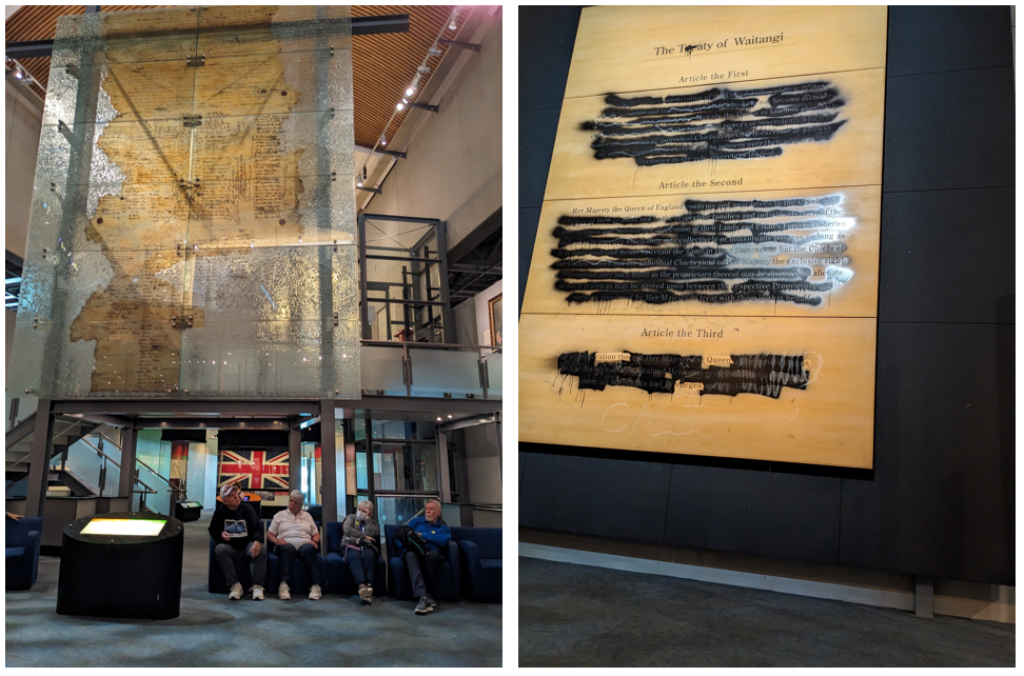
We also saw a model of a Maori boat of the type they would use when sailing between islands. According to our guide, Cook’s boat had a top speed of 5 knots. The Maori boat could do 15. We saw a full size example of a smaller Maori boat (no picture of this one) that had white Albatross feathers tied along both sides of the canoe. This told the navigator the speed and direction of the wind.
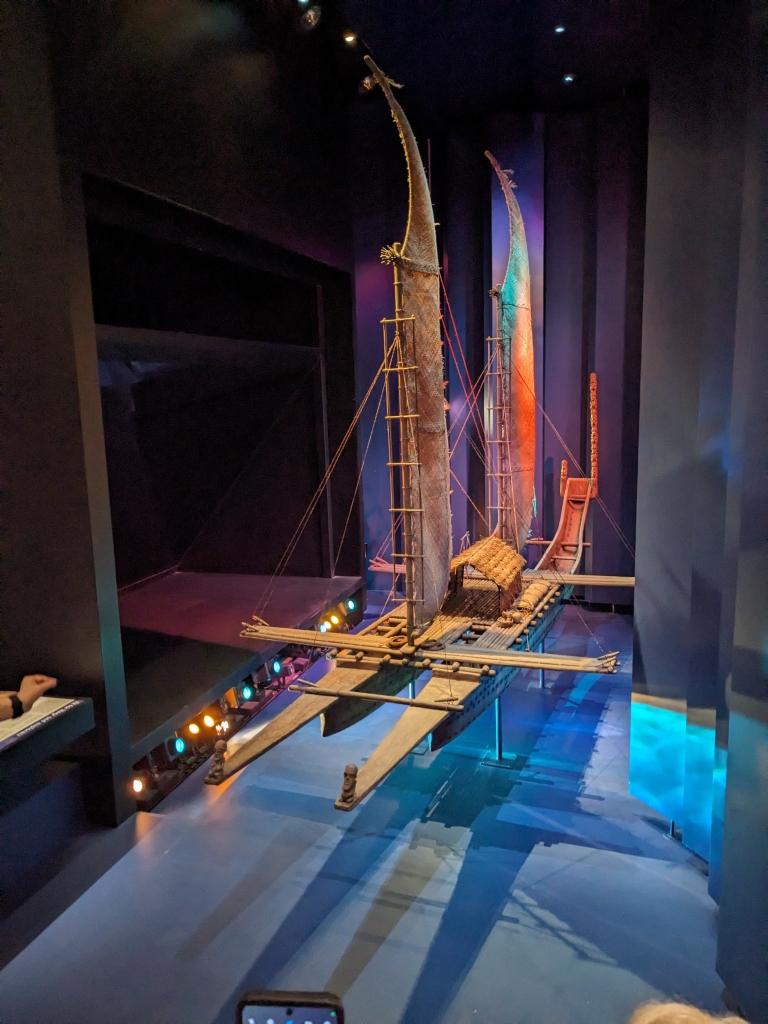
We saw a Maori “food pantry” — a house on stilts with elaborate carvings. You can see it below. The round white disks are eyes. The more eyes in the carving, the better the protection.
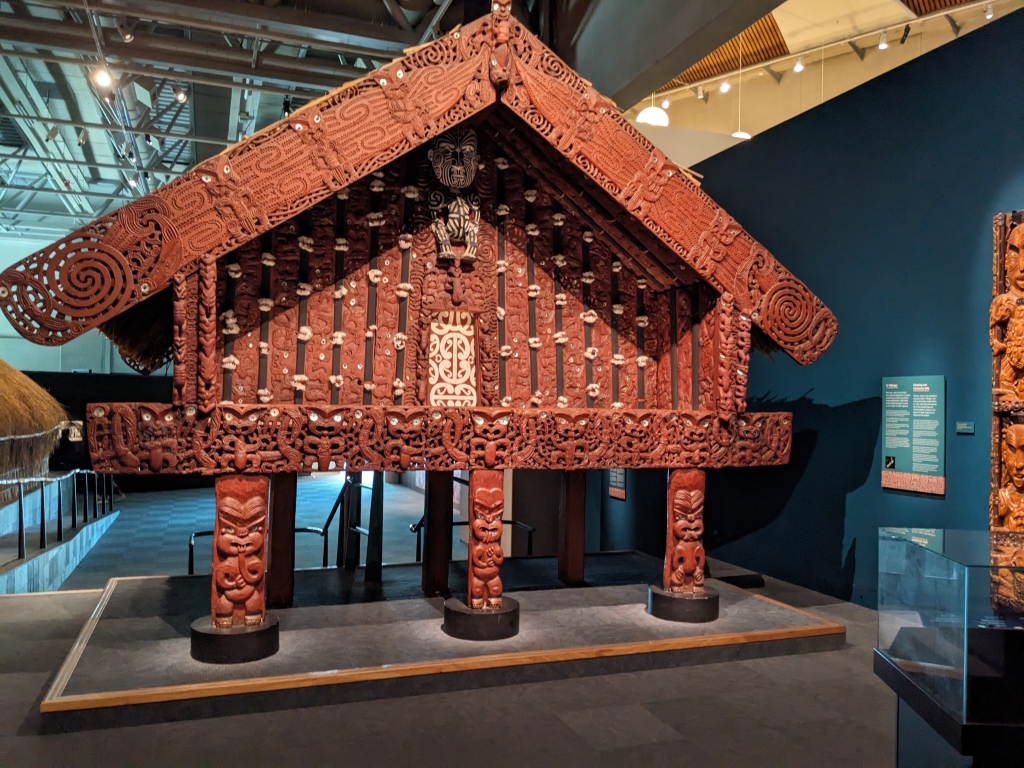
The museum has a Welcome Place that was dedicated to a powerful chief. We weren’t able to photograph it because it is sacred and still being used by the Maori. (They come in the museum and gather inside the Welcome Place.) Compare the carving on the food pantry to a modern Welcome Place called Te Hono Hawaiki (which we could photograph). The structure is made of wood. They made some amazing shapes. It’s obvious the Mauri are not a backwards looking people. They are perfectly willing to adapt themselves to modern technology when they find it appropriate.
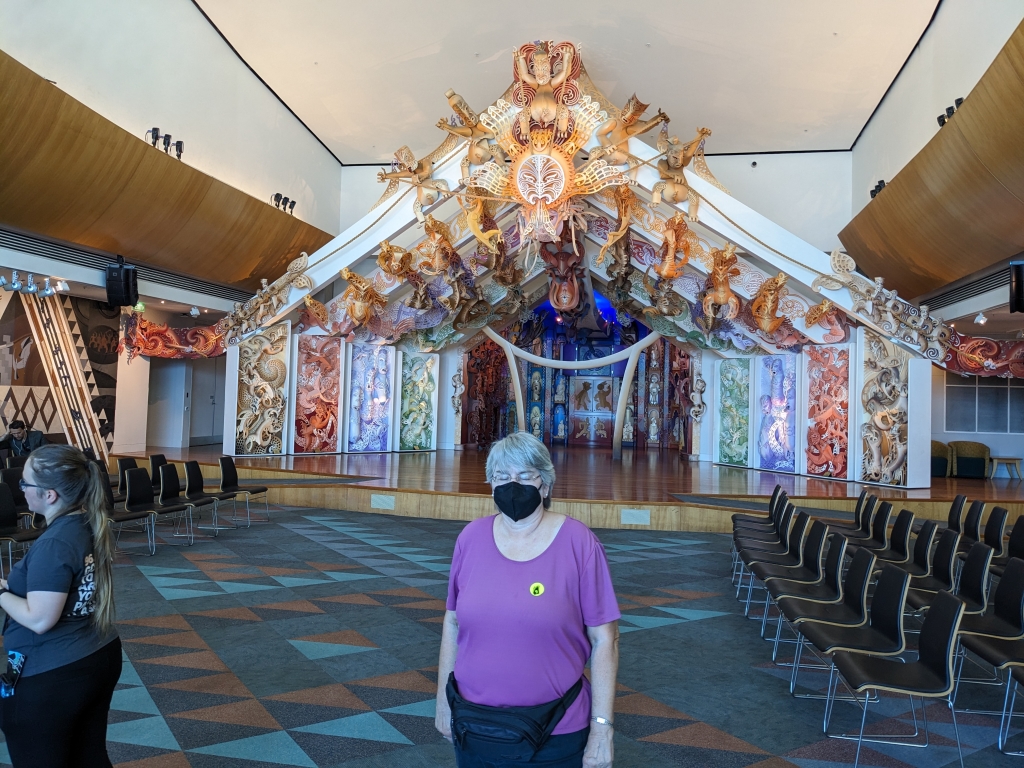
That’s enough for today. I hope this finds everybody doing well.
